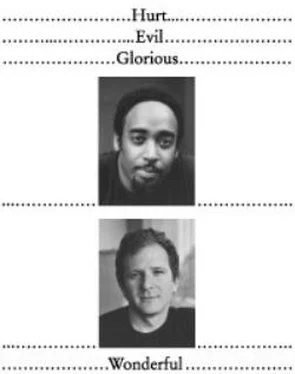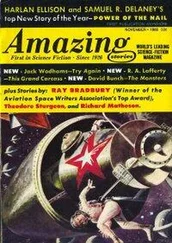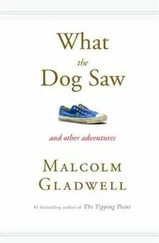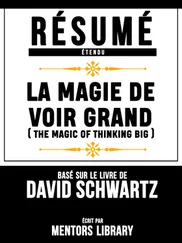Malcolm Gladwell - Blink - The Power of Thinking Without Thinking
Здесь есть возможность читать онлайн «Malcolm Gladwell - Blink - The Power of Thinking Without Thinking» весь текст электронной книги совершенно бесплатно (целиком полную версию без сокращений). В некоторых случаях можно слушать аудио, скачать через торрент в формате fb2 и присутствует краткое содержание. Жанр: Культурология, Психология, на английском языке. Описание произведения, (предисловие) а так же отзывы посетителей доступны на портале библиотеки ЛибКат.
- Название:Blink: The Power of Thinking Without Thinking
- Автор:
- Жанр:
- Год:неизвестен
- ISBN:нет данных
- Рейтинг книги:3 / 5. Голосов: 1
-
Избранное:Добавить в избранное
- Отзывы:
-
Ваша оценка:
- 60
- 1
- 2
- 3
- 4
- 5
Blink: The Power of Thinking Without Thinking: краткое содержание, описание и аннотация
Предлагаем к чтению аннотацию, описание, краткое содержание или предисловие (зависит от того, что написал сам автор книги «Blink: The Power of Thinking Without Thinking»). Если вы не нашли необходимую информацию о книге — напишите в комментариях, мы постараемся отыскать её.
Blink: The Power of Thinking Without Thinking — читать онлайн бесплатно полную книгу (весь текст) целиком
Ниже представлен текст книги, разбитый по страницам. Система сохранения места последней прочитанной страницы, позволяет с удобством читать онлайн бесплатно книгу «Blink: The Power of Thinking Without Thinking», без необходимости каждый раз заново искать на чём Вы остановились. Поставьте закладку, и сможете в любой момент перейти на страницу, на которой закончили чтение.
Интервал:
Закладка:
Ekman slipped a tape from the O.J. Simpson trial into the VCR. It showed Kato Kaelin, Simpson’s shaggy-haired houseguest, being questioned by Marcia Clark, the lead prosecutor in the case. Kaelin sits in the witness box, with a vacant look on his face. Clark asks a hostile question. Kaelin leans forward and answers her softly. “Did you see that?” Ekman asked me. I saw nothing, just Kato being Kato—harmless and passive. Ekman stopped the tape, rewound it, and played it back in slow motion. On the screen, Kaelin moved forward to answer the question, and in that fraction of a second, his face was utterly transformed. His nose wrinkled, as he flexed his levator labii superioris alaeque nasi. His teeth were bared, his brows lowered. “It was almost totally A.U. nine,” Ekman said. “It’s disgust, with anger there as well, and the clue to that is that when your eyebrows go down, typically your eyes are not as open as they are here. The raised upper eyelid is a component of anger, not disgust. It’s very quick.” Ekman stopped the tape and played it again, peering at the screen. “You know, he looks like a snarling dog.”
Ekman showed another clip, this one from a press conference given by Harold “Kim” Philby in 1955. Philby had not yet been revealed as a Soviet spy, but two of his colleagues, Donald Maclean and Guy Burgess, had just defected to the Soviet Union. Philby is wearing a dark suit and a white shirt. His hair is straight and parted on the left. His face has the hauteur of privilege.
“Mr. Philby,” a reporter asks, “Mr. Macmillan, the foreign secretary, said there was no evidence that you were the so-called third man who allegedly tipped off Burgess and Maclean. Are you satisfied with that clearance that he gave you?”
Philby answers confidently, in the plummy tones of the English upper class. “Yes, I am.”
“Well, if there was a third man, were you in fact the third man?”
“No,” Philby says, just as forcefully. “I was not.”
Ekman rewound the tape and replayed it in slow motion. “Look at this,” he said, pointing to the screen. “Twice, after being asked serious questions about whether he’s committed treason, he’s going to smirk. He looks like the cat who ate the canary.” The expression came and went in no more than a few milliseconds. But at quarter speed it was painted on his face: the lips pressed together in a look of pure smugness. “He’s enjoying himself, isn’t he?” Ekman went on. “I call this ‘duping delight,’ the thrill you get from fooling other people.” Ekman started up the VCR again. “There’s another thing he does,” he said. On the screen, Philby is answering another question: “In the second place, the Burgess-Maclean affair has raised issues of great”—he pauses—“delicacy.” Ekman went back to the pause and froze the tape. “Here it is,” he said. “A very subtle microexpression of distress or unhappiness. It’s only in the eyebrows—in fact, just in one eyebrow.” Sure enough, Philby’s right inner eyebrow was raised in an unmistakable A.U. one. “It’s very brief,” Ekman said. “He’s not doing it voluntarily. And it totally contradicts all his confidence and assertiveness. It comes when he’s talking about Burgess and Maclean, whom he had tipped off. It’s a hot spot that suggests, ‘You shouldn’t trust what you hear.’”
What Ekman is describing, in a very real sense, is the physiological basis of how we thin-slice other people.
We can all mind-read effortlessly and automatically because the clues we need to make sense of someone or some social situation are right there on the faces of those in front of us. We may not be able to read faces as brilliantly as someone like Paul Ekman or Silvan Tomkins can, or pick up moments as subtle as Kato Kaelin’s transformation into a snarling dog. But there is enough accessible information on a face to make everyday mind reading possible. When someone tells us “I love you,” we look immediately and directly at him or her because by looking at the face, we can know —or, at least, we can know a great deal more—about whether the sentiment is genuine. Do we see tenderness and pleasure? Or do we catch a fleeting microexpression of distress and unhappiness flickering across his or her face? A baby looks into your eyes when you cup your hands over hers because she knows she can find an explanation in your face. Are you contracting action units six and twelve (the orbicularis oculi, pars orbitalis in combination with the zygomatic major) in a sign of happiness? Or are you contracting action units one, two, four, five, and twenty (the frontalis, pars medialis; the frontalis, pars lateralis; the depressor supercilii; the levator palpebrae superioris; and the risorius) in what even a child intuitively understands as the clear signal of fear? We make these kinds of complicated, lightning-fast calculations very well. We make them every day, and we make them without thinking. And this is the puzzle of the Amadou Diallo case, because in the early hours of February 4, 1999, Sean Carroll and his fellow officers for some reason could not do this at all. Diallo was innocent, curious, and terrified—and every one of those emotions must have been written all over his face. Yet they saw none of it. Why?
The classic model for understanding what it means to lose the ability to mind-read is the condition of autism. When someone is autistic, he or she is, in the words of the British psychologist Simon Baron-Cohen, “mind-blind.” People with autism find it difficult, if not impossible, to do all of the things that I’ve been describing so far as natural and automatic human processes. They have difficulty interpreting nonverbal cues, such as gestures and facial expressions or putting themselves inside someone else’s head or drawing understanding from anything other than the literal meaning of words. Their first-impression apparatus is fundamentally disabled, and the way that people with autism see the world gives us a very good sense of what happens when our mind-reading faculties fail.
One of the country’s leading experts on autism is a man named Ami Klin. Klin teaches at Yale University’s Child Study Center in New Haven, where he has a patient whom he has been studying for many years whom I’ll call Peter. Peter is in his forties. He is highly educated and works and lives independently. “This is a very high-functioning individual. We meet weekly, and we talk,” Klin explains. “He’s very articulate, but he has no intuition about things, so he needs me to define the world for him.” Klin, who bears a striking resemblance to the actor Martin Short, is half Israeli and half Brazilian, and he speaks with an understandably peculiar accent. He has been seeing Peter for years, and he speaks of his condition not with condescension or detachment but matter-of-factly, as if describing a minor character tic. “I talk to him every week, and the sense that I have in talking to him is that I could do anything. I could pick my nose. I could take my pants down. I could do some work here. Even though he is looking at me, I don’t have the sense of being scrutinized or monitored. He focuses very much on what I say. The words mean a great deal to him. But he doesn’t focus at all on the way my words are contextualized with facial expressions and nonverbal cues. Everything that goes on inside the mind—that he cannot observe directly—is a problem for him. Am I his therapist? Not really. Normal therapy is based on people’s ability to have insight into their own motivations. But with him, insight wouldn’t take you very far. So it’s more like problem solving.”
One of the things that Klin wanted to discover, in talking to Peter, was how someone with his condition makes sense of the world, so he and his colleagues devised an ingenious experiment. They decided to show Peter a movie and then follow the direction of his eyes as he looked at the screen. The movie they chose was the 1966 film version of the Edward Albee play Who’s Afraid of Virginia Woolf? starring Richard Burton and Elizabeth Taylor as a husband and wife who invite a much younger couple, played by George Segal and Sandy Dennis, for what turns out to be an intense and grueling evening. “It’s my favorite play ever, and I love the movie. I love Richard Burton. I love Elizabeth Taylor,” Klin explains, and for what Klin was trying to do, the film was perfect. People with autism are obsessed with mechanical objects, but this was a movie that followed very much the spare, actor-focused design of the stage. “It’s tremendously contained,” Klin says. “It’s about four people and their minds. There are very few inanimate details in that movie that would be distracting to someone with autism. If I had used Terminator Two, where the protagonist is a gun, I wouldn’t have got those results. It’s all about intensive, engaging social interaction at multiple levels of meaning, emotion, and expression. What we are trying to get at is people’s search for meaning. So that’s why I chose Who’s Afraid of Virginia Woolf? I was interested in getting to see the world through the eyes of an autistic person.”
Читать дальшеИнтервал:
Закладка:
Похожие книги на «Blink: The Power of Thinking Without Thinking»
Представляем Вашему вниманию похожие книги на «Blink: The Power of Thinking Without Thinking» списком для выбора. Мы отобрали схожую по названию и смыслу литературу в надежде предоставить читателям больше вариантов отыскать новые, интересные, ещё непрочитанные произведения.
Обсуждение, отзывы о книге «Blink: The Power of Thinking Without Thinking» и просто собственные мнения читателей. Оставьте ваши комментарии, напишите, что Вы думаете о произведении, его смысле или главных героях. Укажите что конкретно понравилось, а что нет, и почему Вы так считаете.












